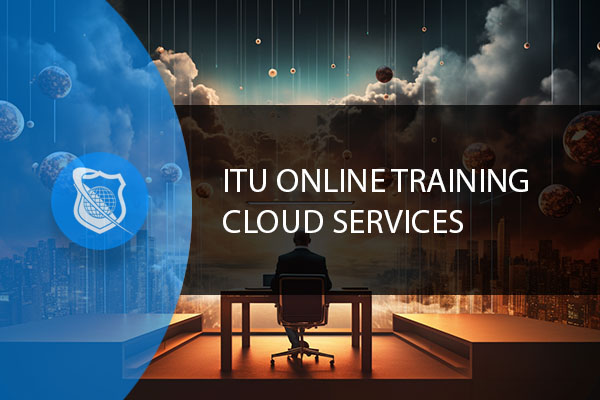What Is 5G?
5G stands for the fifth generation of cellular network technology, providing faster speeds, lower latency, and more reliable connections on mobile devices and other 5G-enabled technologies compared to its predecessor,

Hypervisors, also known as Virtual Machine Monitors (VMMs), are a fascinating piece of technology that allows multiple operating systems to share a single hardware host. This technology is the backbone of virtualization and is crucial in cloud computing, enabling efficient resource utilization and system management.
Hypervisors provide a layer of abstraction between the hardware and the operating system. They allow multiple ‘guest’ operating systems to run concurrently on a host machine, treating resources like CPU, memory, and storage as a pool that can be dynamically allocated to each guest OS.
There are two main types of hypervisors, each with its distinct architecture and use cases:
This comprehensive training series is designed to provide both new and experienced network administrators with a robust skillset enabling you to manager current and networks of the future.
Hypervisors work by taking requests from the guest operating systems and translating them into the appropriate hardware instructions. This process includes:
Hypervisors are widely used in various scenarios, including:

Your career in information technology last for years. Technology changes rapidly. An ITU Online IT Training subscription offers you flexible and affordable IT training. With our IT training at your fingertips, your career opportunities are never ending as you grow your skills.
Plus, start today and get 30 days for only $1.00 with no obligation. Cancel anytime.
While hypervisors offer numerous benefits, there are challenges and considerations to keep in mind:
The choice of a hypervisor depends on various factors including performance requirements, budget constraints, infrastructure compatibility, and specific use cases. Let’s examine the most well-known server and software virtualizations.
Pros:
Cons:
Ideal Use Case: Best suited for large enterprises requiring a robust, feature-rich environment and those who can afford the investment in licensing and training.
Pros:
Cons:
Ideal Use Case: Ideal for small to medium-sized businesses heavily invested in the Microsoft ecosystem and for environments where Windows is the primary operating system.
Pros:
Cons:
Ideal Use Case: Well-suited for organizations looking for an open-source solution, and those with graphics-intensive virtual workloads.
Pros:
Cons:
Ideal Use Case: Best for individual users or small businesses looking for a simple, cost-effective solution for development or test environments.
Pros:
Cons:
Ideal Use Case: Best for organizations with technical expertise that require a customizable, open-source solution and are heavily invested in a Linux environment.
Selecting the right hypervisor involves balancing these pros and cons against your specific requirements and constraints. It’s crucial to thoroughly evaluate your infrastructure, performance needs, budget, and team’s expertise before making a decision.

At ITU, we offer an exclusive Cloud Computing training series designed to prepare you for certification and/or to help you gain knowlege of all Cloud based platforms including AWS, Azure and Gooogle Cloud.
Get access to this exclusive Cloud Computing Training today.
Hypervisors are a cornerstone of virtualization technology. They allow businesses and individuals to optimize hardware usage, reduce costs, and improve scalability and flexibility. As technology evolves, hypervisors will continue to play a pivotal role in the IT infrastructure, driving innovation in cloud computing, virtualization, and beyond.
The primary difference lies in their architecture and how they interact with the underlying hardware. Type 1 hypervisors, also known as bare-metal hypervisors, run directly on the host’s hardware to control the hardware and manage guest operating systems. They are known for their efficiency and are commonly used in enterprise environments. On the other hand, Type 2 hypervisors, also known as hosted hypervisors, run on a conventional operating system just like other computer programs. They are easier to set up and manage but generally offer less performance than Type 1 hypervisors.
Hypervisors are designed to keep virtual machines isolated from each other. This isolation is crucial for maintaining the security and stability of the system. However, like any software, hypervisors can have vulnerabilities. Ensuring complete isolation also requires proper configuration and regular maintenance, including applying security patches and updates to the hypervisor and guest operating systems.
Hypervisors introduce a layer of abstraction between the hardware and the guest operating systems, which can lead to some performance overhead. The impact on performance varies depending on the type of hypervisor, the workload of the virtual machines, and the configuration of the system. Type 1 hypervisors are generally more efficient and offer better performance than Type 2 hypervisors, especially for I/O-intensive applications.
Open-source hypervisors like KVM and Xen are widely used and can be just as reliable as commercial hypervisors. They are supported by large communities and organizations. The reliability often depends more on the specific use case, workload, and how well the hypervisor is maintained and configured rather than whether it is open-source or commercial.
Hypervisors play a crucial role in disaster recovery and business continuity by providing robust solutions for data protection, system backup, and recovery. With features like live migration, hypervisors allow businesses to move virtual machines from one server to another without downtime, ensuring continuous availability of applications. They also enable quick recovery from hardware failures, as virtual machines can be easily transferred or replicated to other servers. Additionally, hypervisors facilitate regular and consistent snapshotting of virtual machine states, allowing for rapid restoration to a previous state in case of data corruption or loss. This capability is essential for minimizing downtime and ensuring business operations can quickly resume after a disruptive event. By leveraging the virtualization capabilities of hypervisors, organizations can implement comprehensive disaster recovery plans, reduce the impact of outages, and maintain business continuity even in the face of unexpected incidents.
Lorem ipsum dolor sit amet, consectetur adipiscing elit. Ut elit tellus, luctus nec ullamcorper mattis, pulvinar dapibus leo.
$49.99 Original price was: $49.99.$16.99Current price is: $16.99. / month with a 10-day free trial
5G stands for the fifth generation of cellular network technology, providing faster speeds, lower latency, and more reliable connections on mobile devices and other 5G-enabled technologies compared to its predecessor,
An Access Point Name (APN) is a setting on mobile devices that identifies an external network a device can connect to for accessing data services. Acting as a gateway, APNs
Adaptive Encryption is an advanced security measure that dynamically adjusts its encryption methods and strength based on the perceived level of threat and the type of data being protected. This
Address Resolution Protocol (ARP) is a fundamental protocol used in the Internet Protocol (IP) networking realm. Its primary function is to map or resolve IP addresses to the physical machine
Advanced Driver-Assistance Systems (ADAS) are electronic systems in vehicles designed to enhance vehicle safety and aid the driver in the driving process. These systems use a variety of sensors, such
Agile Development Practices encompass a set of methodologies and principles aimed at improving the efficiency, flexibility, and adaptability of the software development process. These practices are designed to foster collaboration
Agile Requirements Engineering is a crucial discipline within software development and project management that focuses on the continuous identification, documentation, and management of the requirements for a project in an
Agile Testing is a software testing process that follows the principles of agile software development. It is an iterative testing process that is part of the development lifecycle, emphasizing flexibility,
Air-gap security is a network security measure that involves isolating a computer or network from external networks, including the internet and local area networks (LANs). This isolation is achieved physically,
Algorithmic Complexity Theory, often synonymous with Computational Complexity Theory, delves into the study of computational problems with respect to the resources they require for their solution. This theory categorizes problems
Ambient Intelligence (AmI) refers to electronic environments that are sensitive and responsive to the presence of people. This concept combines several key technologies, including IoT (Internet of Things), sensor technology,
Electronic components are the building blocks of electronic circuits; they are the individual pieces that, when combined, create the functionality of electronic devices. These components can be classified broadly into
ENDING THIS WEEKEND: Train for LIFE at our lowest price. Buy once and never have to pay for IT Training Again.

Get ready for the updated 220-1201 & 220-1202 exams with our brand-new CompTIA A+ training—designed to help you pass with confidence and start your IT career strong. Access this course and over 2,900 hours of expert-led IT training when you sign up for any of our All-Access Passes. Don’t miss out—enroll now and start learning today!